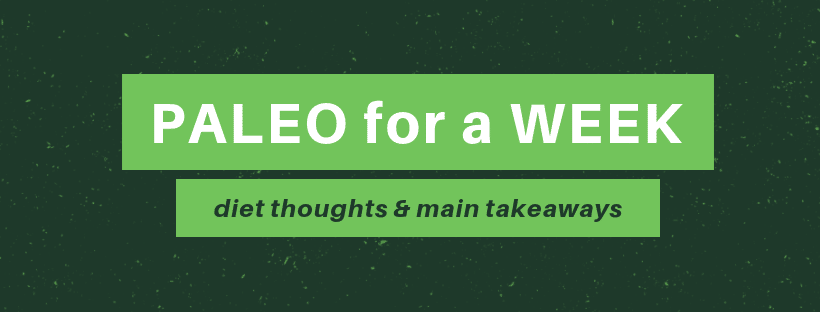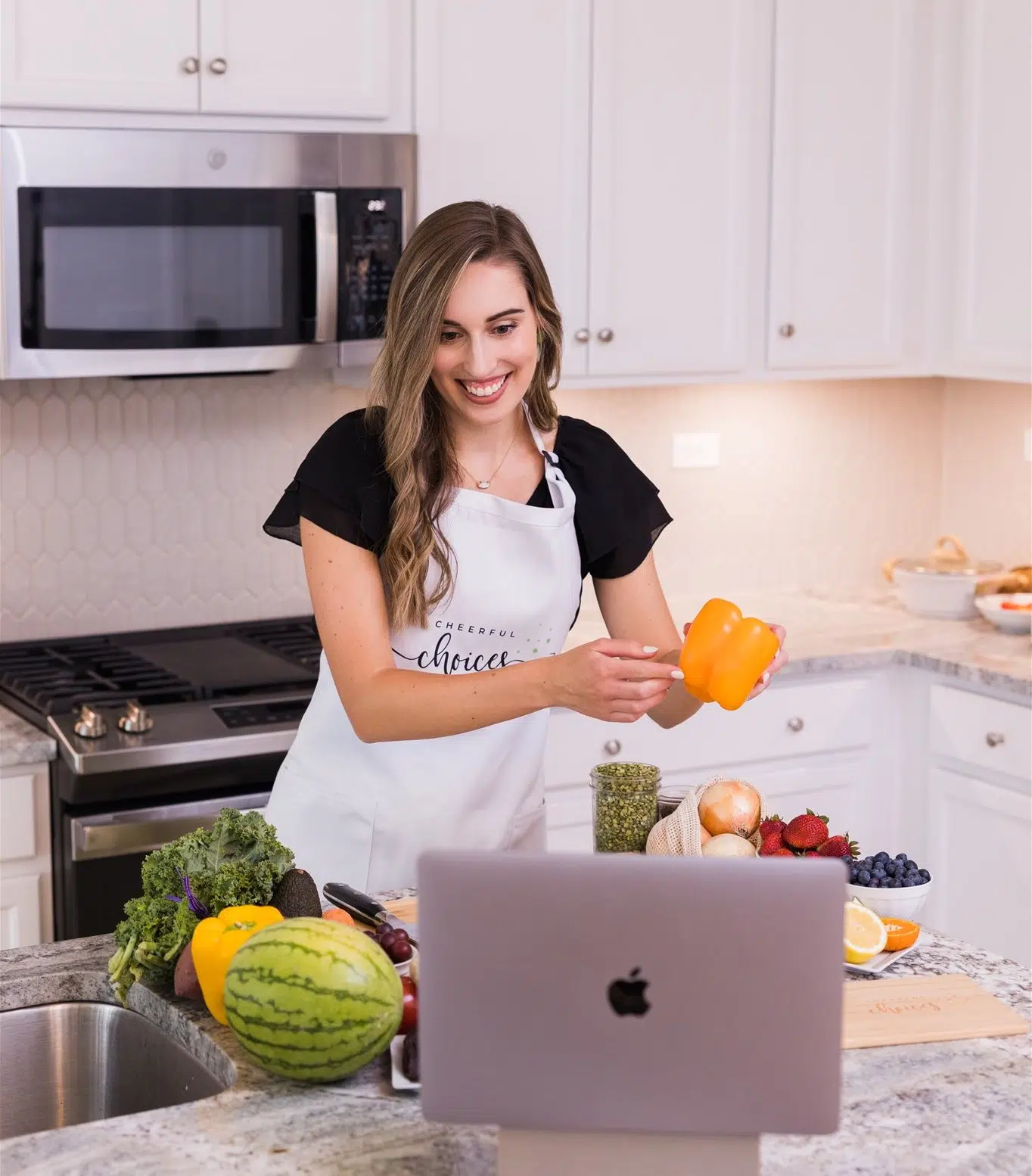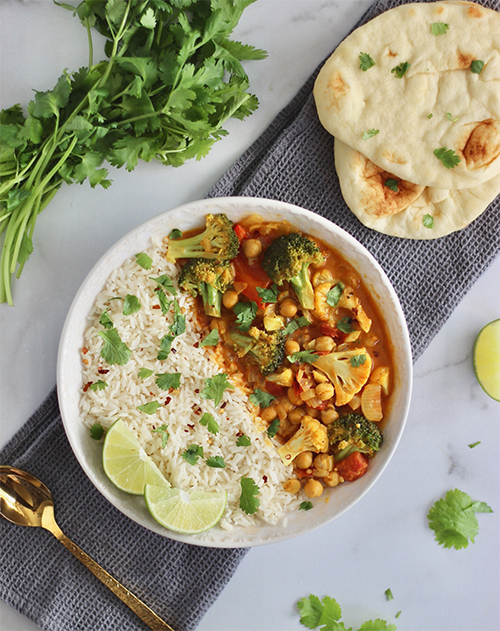Another week, another diet. This time I decided to try out the Paleo diet for a week. If you haven’t read my previous post on diets, I believe diets can be used as an approach to help individuals realize which foods make them feel better and which foods could be limited or completely cut out of their regimen. However, the rules and guidelines set out by diets are often hard to follow and not sustainable. This being said, rather than following a controlled eating pattern laid out by someone else, I believe the focus should be more about finding a healthy eating pattern that works for you and your lifestyle.
The origins of the creation of the Paleo diet can be traced back to 1975, but it became popularized by Dr. Loren Cordain (a professor at my university, actually!) in 2002 by the book, The Paleo Diet.
What is a Paleo Diet?
The gist of this diet is for us to eat like our Paleolithic ancestors did. Archaeological evidence shows that this was a diet rich in meat and plant foods like fruits, vegetables, and herbs. During these times, grains and beans were not eaten frequently since gathering them and cooking them was time-consuming and inefficient.
Although this dietary pattern has several variations, the traditional Paleo diet excludes grains, dairy, legumes (beans, lentils, peanuts), vegetable oils, refined and artificial sweeteners, and processed foods.
Thoughts
After being vegan for a week last week and eating tons of grains and peanut butter, it was hard adjusting to cutting these foods out of my diet. I also found it somewhat confusing trying differentiate what foods were paleo or not. I found myself Googling things like, “Is nutritional yeast Paleo?”, “Is hummus Paleo?”, “Is ketchup Paleo?”
After finally figuring out what I could and couldn’t eat, I definitely felt some disappointment. No hummus to dip my veggies in. No overnight oats. No barbecue sauce containing refined sugar. No popcorn with my movie. No quinoa on my salad. But the worst of all… no peanut butter. This was gonna be a long week.
I did, however, find ways to get creative with this diet. For meals this week, I created recipes like Avocado Chicken Salad, Beef and Broccoli, Sweet Potato Crust Pizza, and a delicious Cilantro Lime Shrimp Cauliflower bowl (click here to get the recipe)! These meals took a lot more time to prepare as I had to prep items like a homemade, refined-sugar free BBQ sauce, make cauliflower rice in my food processor, and pull chicken from a rotisserie chicken for the salad.
Although refined sugars are not allowed, more natural sugars like maple syrup, coconut sugar, or raw honey were and my sweet tooth took advantage of these options. I created yummy desserts like Coconut Apple Crisp and Coconut Cookie Dough Banana Ice Cream, made from items like frozen bananas, dates, coconut sugar, cashew butter, and coconut flakes. Throughout the week, I noticed I was definitely more hungry (actually hangry!), especially if I didn’t prepare well to accommodate for the dietary restrictions. I also noticed I ate much more food at a meal to try to satisfy myself, whereas if I just added a little bit of brown rice on the side or a sprinkle of cheese on top, I would’ve eaten less because my craving would have be fulfilled.
Most of these recipes I prepared were delicious but expensive. I realized buying grass-fed meats, fancy nut butters, and tons of produce adds up. It reminded me of my food privilege that I often take for granted. Having so many options for our diets and being able to buy the foods that are most useful fuel our body is truly a privilege.
It also reminded me of the fact that grains and legumes are a food groups across the world that are eaten to sustain life at a low cost. When I was studying abroad in Nicaragua, we learned that a pound of beans cost 17 córdobas and rice cost 14 córdobas. When looking at the exchange rate of 30 córdobas equaling 1 US dollar; these items are very cheap to buy and were eaten in abundance. There are so many health benefits to eating whole grains and beans such as protein, fiber, and essentials minerals–just to name a few.
Takeaways
Like most all dietary patterns, Paleo has both pros and cons.
Pros: This diet is good in the fact that it cuts down on processed foods such as white bread and other refined flour products, artificial cheese, packaged meats, chips, and sugary cereals. These kinds of processed foods often have less protein, fiber, and iron and more sodium, preservatives, and added sugar than their unprocessed equivalents. It also focuses on promoting fruits and vegetables–which is always a plus. The diet is typically higher in protein which can often contribute to satiety and promote weight loss.
Cons: I think any diet that completely cuts out a beneficial food groups is one to question. Paleo cuts out food items including dairy rich in calcium, grains filled with fiber, and legumes packed with protein. During the week, I literally found myself just wanting to eat a spoonful or quinoa or a black bean or two– both nutritious foods but also on the “do not eat” list. Elimination of these foods cuts out some healthful foods and can potentially jack up the grocery bill.
Main Takeaways: We are very different from our Paleolithic predecessors. Even if you wanted to eat exactly like our ancestors, those foods available 10,000 years ago are very different from what is available to us today. Some find that the Paleo diet works for them and fits into their lifestyle, especially if they have a medical condition or allergy that warrants the elimination of dairy, grains, or legumes. If you decide this dietary pattern is one that work well for you, the key is to avoid excessive saturated fat intake and make sure you are getting the proper nutrients you need, especially Calcium and Vitamin D.
If you would like to learn more about paleo dietary patterns, click here to read more.












0 Comments